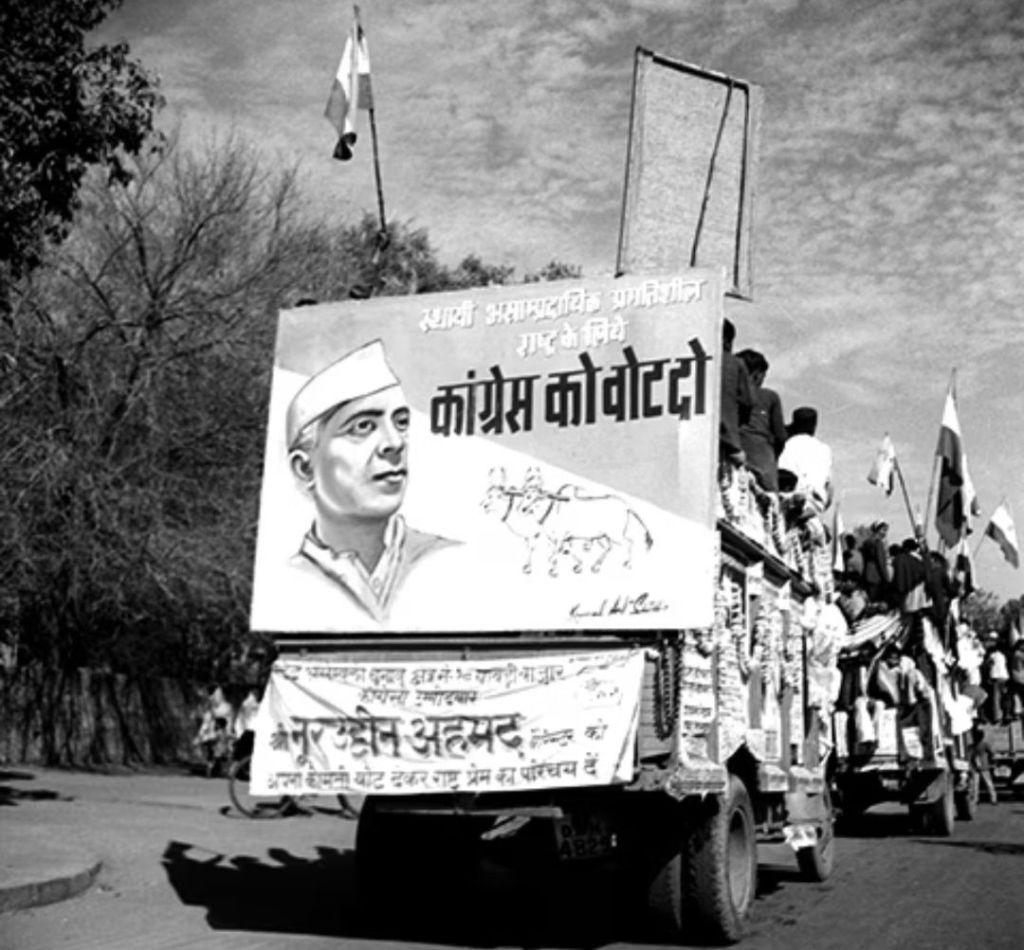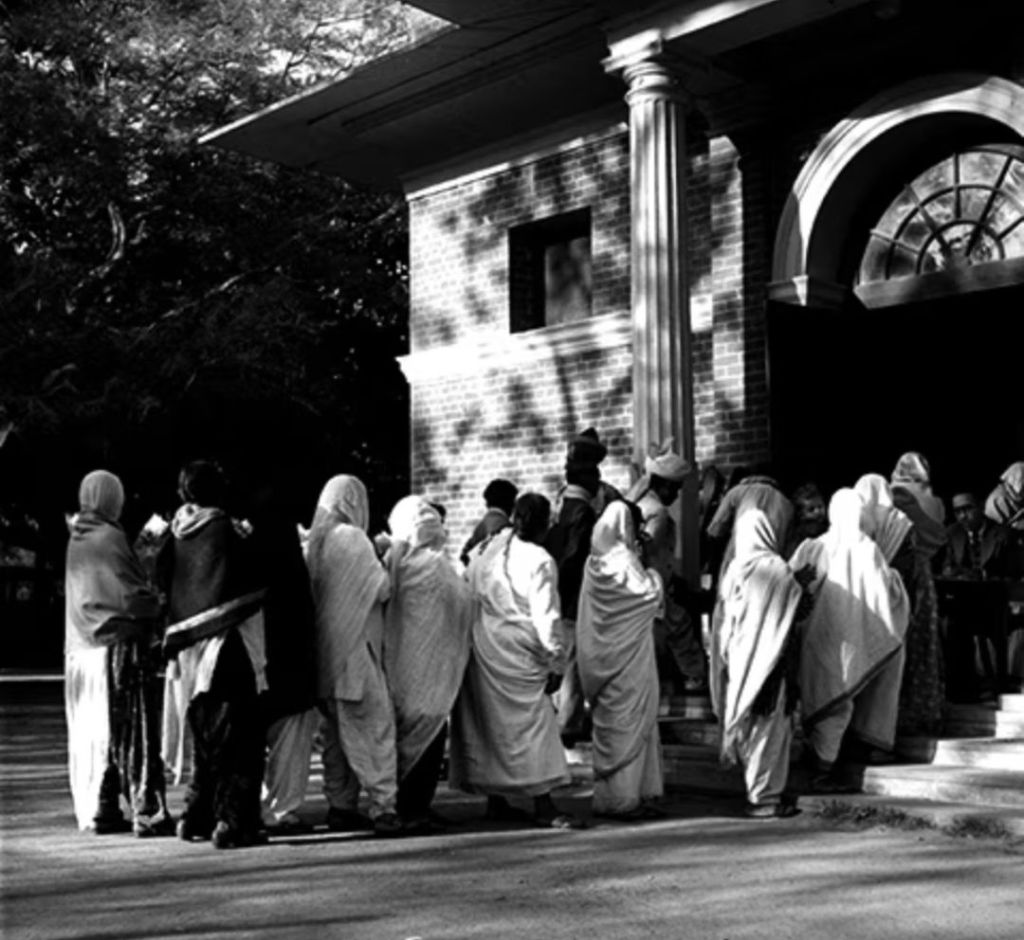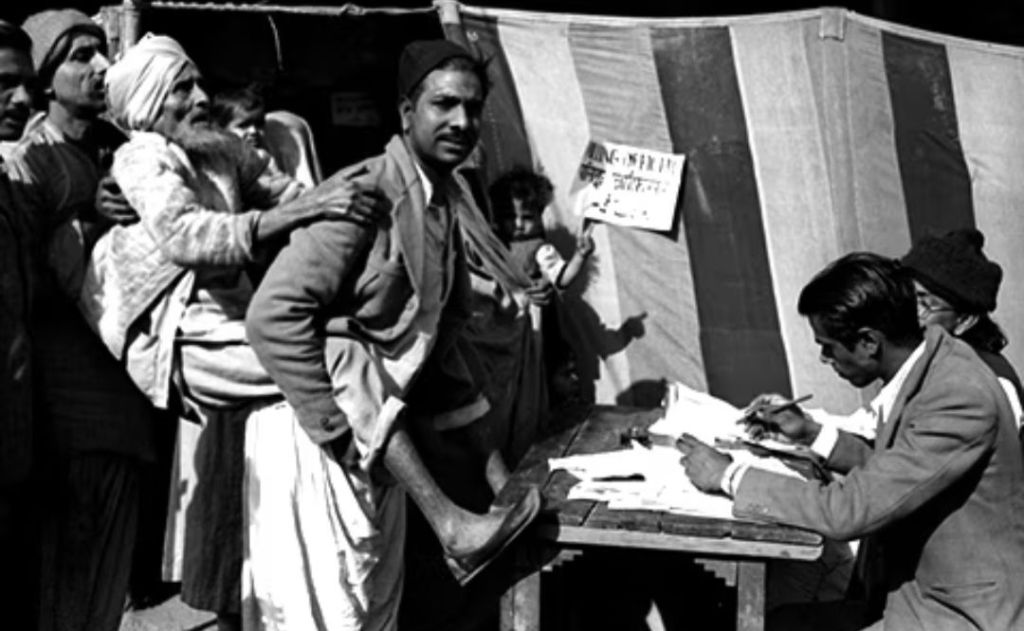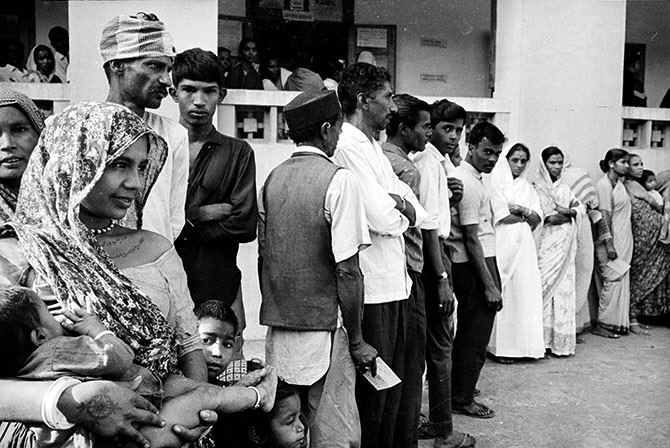“India’s first general election was, among other things, an act of faith,” wrote Ramachandra Guha in his book India After Gandhi.
A newly independent country chose to move straight into universal suffrage, rather than–as has been the case in the West–at first reserve the right to vote to men of property, with the working class and women excluded from the franchise, until much later. That says a lot about the nation’s courage to embrace democracy, despite all its challenges.
India gained independence in 1947, and just two years later, it established an Election Commission, marking the beginning of the festival of democracy–a monumental event that would grow to become the largest celebration of its kind in human history.

Let’s learn more about this fascinating story of democracy unfolding in India.
Starting with numbers
We have to start with numbers because the sheer magnitude of this event was staggering.
Think of this: 4,500 seats up for grabs, with around 500 reserved for Parliament and the rest for provincial assemblies. That does sound a lot, isn’t it?
To ensure smooth voting, 224,000 polling booths were set up, each equipped with 2 million steel ballot boxes–requiring a whopping 8,200 tonnes of steel. Additionally, 16,500 clerks were hired on six-month contracts to compile electoral rolls, devouring about 380,000 reams of paper in the process.
To oversee the proceedings, 56,000 presiding officers were selected, supported by an army of 280,000 helpers. And to maintain order, a staggering 224,000 policemen were deployed to prevent any violence or intimidation.
For the first time, millions of Indians were gearing up to exercise their fundamental right to vote, setting the stage for both anticipation and amusement. What happened next? Let’s find out.
First-timer’s follies
No doubt, India’s first general elections faced all kinds of challenges, from geographical to population complexities, but it was the curious clash with entrenched social customs and practices that created the real drama.
Consider this case, for instance. Many women in northern India did not want to give their own names to strangers, in this case, the polling officials. Instead, they wished to register themselves as A’s mother or B’s wife. As a result, some 2.8 million women voters had finally to be struck off the list.

In another place, during the voting process, a man mistakenly marked his ballot paper with a drawing of a bow and arrow instead of voting for a candidate. When asked about his unconventional choice, he replied that he wanted to ‘shoot down corruption.’
Just like the voters, the candidates were no less adventurous. One candidate decided to bring a parrot to his campaign rallies, claiming that the bird could predict election results. Another candidate got so excited while giving a speech that he started dancing to the music playing in the background.
It was all happening. India was celebrating something unprecedented, an occasion that would soon become a defining feature of its identity. That’s where the excitement, or the chaos, was coming from.
The first general election begins
After a long wait, the millennia-old civilisation was finally ready for its first ever general elections. The preparations had been top-notch. An American woman photographer on assignment wrote about the commitment shown by the election officials. One official had walked for six days to attend the preparatory workshop organised the district magistrate; another had ridden four days on a mule. They went back to their distant stations with sewn gunny sacks full of ballot boxes, ballots, party symbols and electoral lists.
Everything was set… as THE DAY arrived.
In the remote Kinnaur district of Himachal Pradesh, with winter approaching and threatening to soon blanket the valley in snow, India’s first voter cast his ballot on October 25, 1951. This historic vote belonged to Shyam Saran Negi, who continued to exercise this right until his passing in 2022 at the age of 105.
The rest of the country, too, was eagerly waiting for their chance. A scholar from the London School of Economics described how a young woman in Himachal walked several miles with her frail mother to vote: ‘for a day, at least, she knew she was important.’
A Mumbai-based weekly marvelled at the high turnout in the forest districts of Orissa, where the tribals came to the booths with bows and arrows. While one booth in the jungle reported more than 70 per cent voting, another one was visited only by an elephant and two panthers.

The press especially highlighted the stories of the elderly: 110-year-old man in Madurai who came propped up on either side by a great-grandson, a 95-year-old woman in Ambala, deaf and hunchbacked, who still turned up to vote. Then there was a 90-year-old Muslim man in rural Assam who had to return disappointed after being told by the presiding officer that ‘he could not vote for Nehru from his constituency.’
All these stories, collectively, laid the foundation of a democratic tradition. As we enter another election cycle today, let’s take a moment to remember all these characters, who, through the simple act of voting, shaped India’s democratic landscape.
